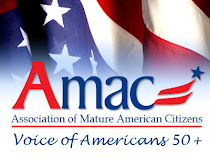Why do Leaves Change Color?
To read the rest of the article and find out what brings the best fall foliage and where, click HERE
Helping Busy People Save Time & Money.
Good times or bad times, I thought we all needed to have a place where we can get help to stretch our dollars.

In November 2015, the Department of Biological Sciences at East Tennessee State University set up live streaming cameras focused on two active nests of Bald Eagles, our national bird. Two separate mated pairs of Bald Eagles have been selected, one nest is located in Bluff City, and the other is in Johnson City. These cameras provide a novel perspective into the lives and habits of these beautiful birds. Bald Eagles are long-lived birds of prey that have high nest site fidelity and will reuse the same structure for years. As part of the courtship behavior, mated pairs of Bald Eagles will bring new twigs and branches to the pre-existing nest each breeding season which results in a massive structure that can be well over one ton in weight! The Bluff City eagles laid eggs on Feb 3 and Feb 6. The Johnson City eagles laid eggs on Feb 10 and Feb 13. Eggs of Bald Eagles are laid 3 days apart (so ours read the maternity guides and laid their eggs on schedule) and the eggs hatch in 35 days. Using these guidelines, we have calculated the Bluff City eggs should hatch on March 9 and 12 and the Johnson City eggs should hatch on March 16 and 19. S o keep your eyes out everyone, we may have eaglets soon!! This is a prime opportunity to observe these iconic birds in their natural habitat, undisturbed.
.png)
Here is information about an organization that trains Shelter Dogs to help our Vets with PTSD. The organization is called "Paws and Stripes". They were recently on Fox News morning show ( CLICK HERE )
Paws and Stripes is a nonprofit organization providing service dogs for wounded military veterans with post-traumatic stress disorder and traumatic brain injury through integrating service dog training and education with mental health support.
We help veterans so they can live the full and rich lives they deserve.
Our dogs come only from local rescues. Our service dog trainers teach the dogs and the veterans as a team.
These dogs are not pets, they are service dogs with the complete protection and rights granted by the American with Disabilities Act.
Our program is funded through generous grants and donations from people like you. Our veterans are never obligated to pay a penny of the program's costs to enroll. (Here is the link to their web page - CLICK HERE
Dear Readers:
There is a Memorial Wall for those who have fallen during the Middle East Conflicts in Marseilles, Illinois. Apparently, it has been there a couple of years, built by a private business, and without government funds. The business maintains it and updates it. To see and hear about it CLICK HERE
Traitor
“A nation can survive its fools, and even the ambitious. But it cannot survive treason from within. For the traitor appears not as a traitor, but speaks in accents familiar to his citizens and wears their face and their arguments. He appeals to the baseness that lies deep in the hearts of all men. He rots the soul of a nation and works secretly to undermine the pillars of the city, infecting the body politic so that it can no longer resist.” Cicero 106-43 BC
SOMETHING TO PONDER:
The United States is the 3rd in murders throughout the world! But if you take out Chicago, Detroit, Washington D. C., and New Orleans, the United States is 4th from the bottom for murders. Believe it or not, these four cities also have the toughest gun control laws in the United States. Hmmm...
**********************
“Imagination was given to man for what he is not; a sense of humor for what he is.” – Francis Bacon
*******************
Check your shampoo bottle label. I don’t know why I didn’t figure this out sooner!! It’s the shampoo I use in the shower! When I wash my hair, the shampoo runs down my whole body, and printed very clearly on the shampoo label is this warning: FOR EXTRA VOLUME AND BODY! No wonder I have been gaining weight!!!
Well I have gotten rid of that shampoo and I am going to start using Dawn dish soap instead. Their label reads: DISSOLVES FAT THAT IS OTHERWISE DIFFICULT TO REMOVE. Problem solved!!.
If I don’t answer the phone, I’ll be in the shower!

SS - Smart Source Insert
RP - Red Plum Insert
P&G - Procter & Gamble Insert
MFR - Manufacturer Coupon
SC - Store Coupon
CC - Competitor Coupon
B1G1/BOGO - Buy One, Get One
WYB - When You Buy
YMMV - Your Mileage May Vary
MIR - Mail in Rebate
FAR - Free After Rebate
$1 SS 1/4 - $1 Coupon Smart Source
OOP - Out of Pocket
WFC - Weekly Flyer Coupon
$1.50/2 - $1.50 off two items
ECB - Extracare Bucks (CVS)
WAGS - Walgreens
RR - Register Reward (Wags)
No comments:
Post a Comment